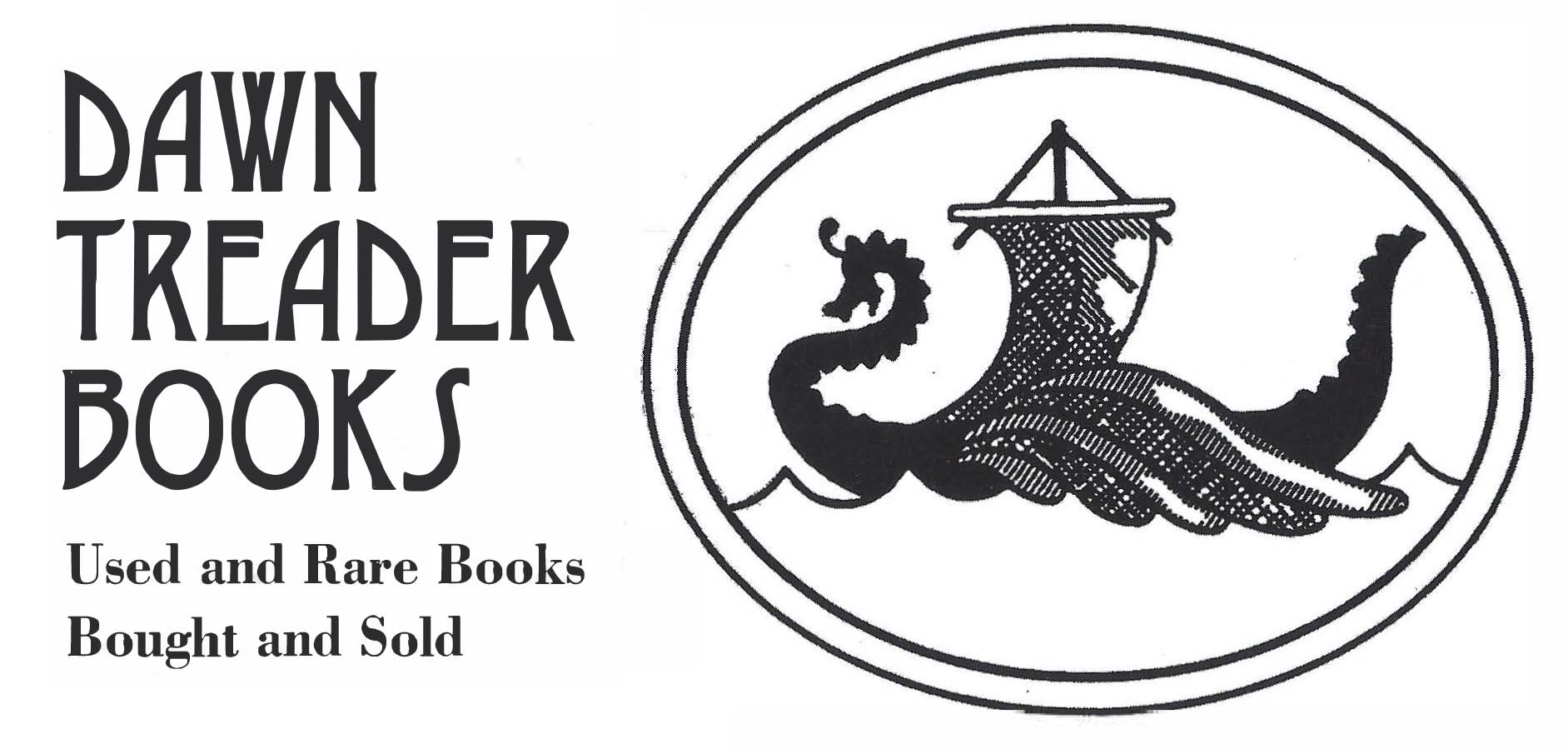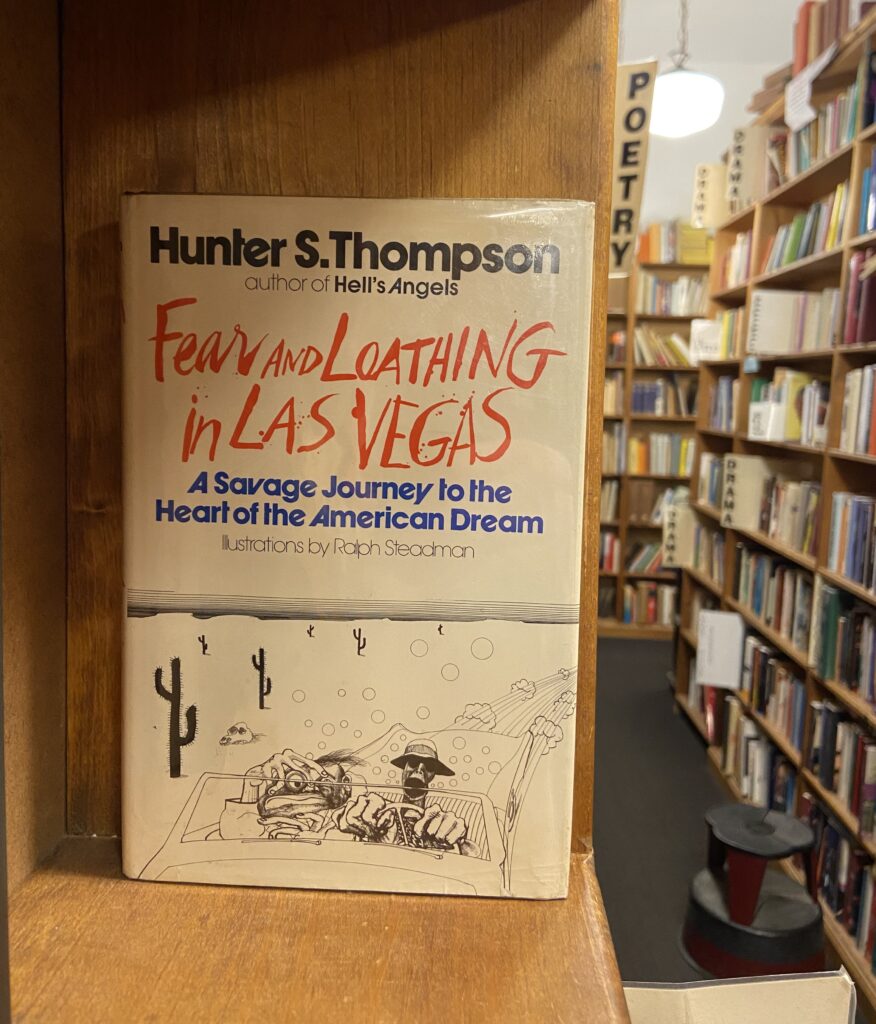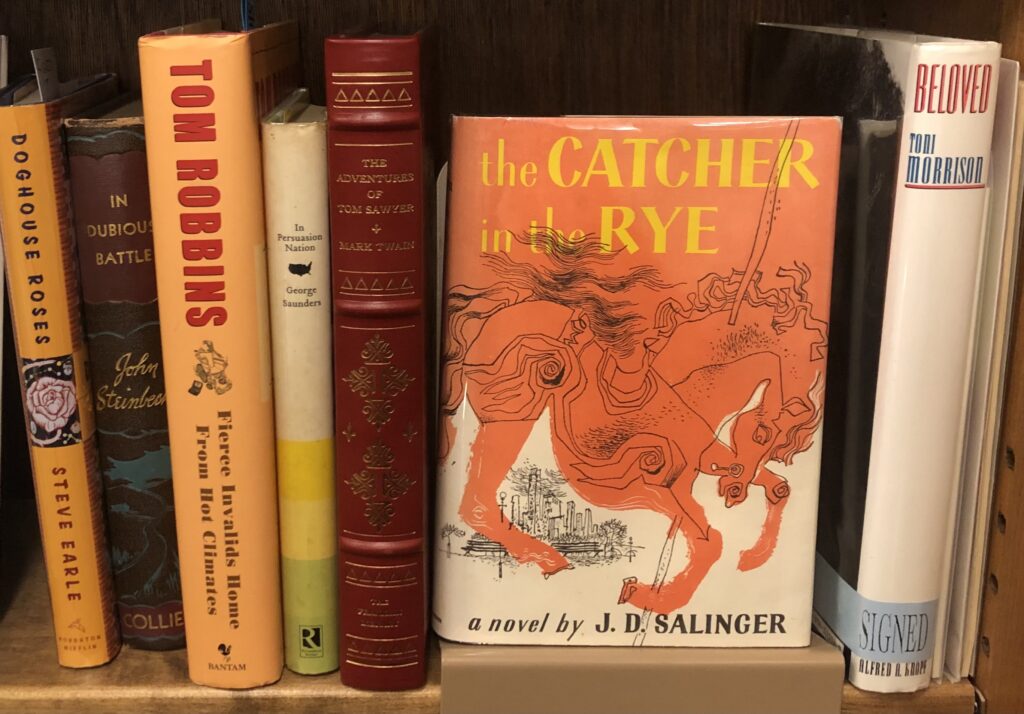by Edward Gorey
SIGNED | First Edition | G. P. Putnam’s Sons | 1975
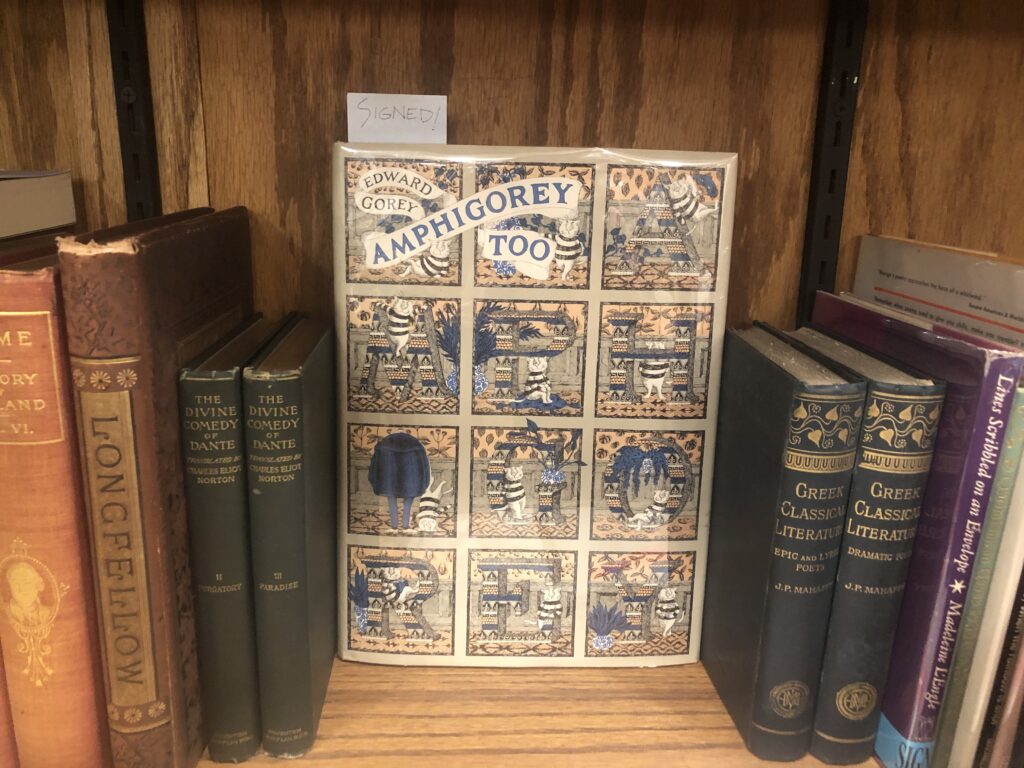

Edward Gorey was a Creative with a capital C – a writer, illustrator, set and costume designer, fur coat-clad style icon, and eccentric companion to a host of artists and intellectuals who formed a corner of the counterculture movement at Harvard, Boston, and beyond. Gorey was prolific – over the course of his career, he illustrated over 200 book covers, wrote and illustrated over 100 books, stories, and unclassifiable “works,” and won a Tony Award for Costume Design in the 1977 Broadway revival of Dracula, among other accomplishments.
Amphigorey Too was published as a follow-up to Amphigorey, the first collection of Gorey’s works. It anthologizes 20 Gorey stories that may be difficult to find or buy individually, including such gems as “The Beastly Baby,” “The Nursery Frieze,” “The Pious Infant,” “The Inanimate Tragedy,” “The Gilded Bat,” and more. Gorey’s signature style is on full display – Victorian, gothic, surrealist, absurd, and darkly funny. The combination of these elements leaves a reader unsettled, with a vague sense of the macabre, rendered whimsical with biting humor.
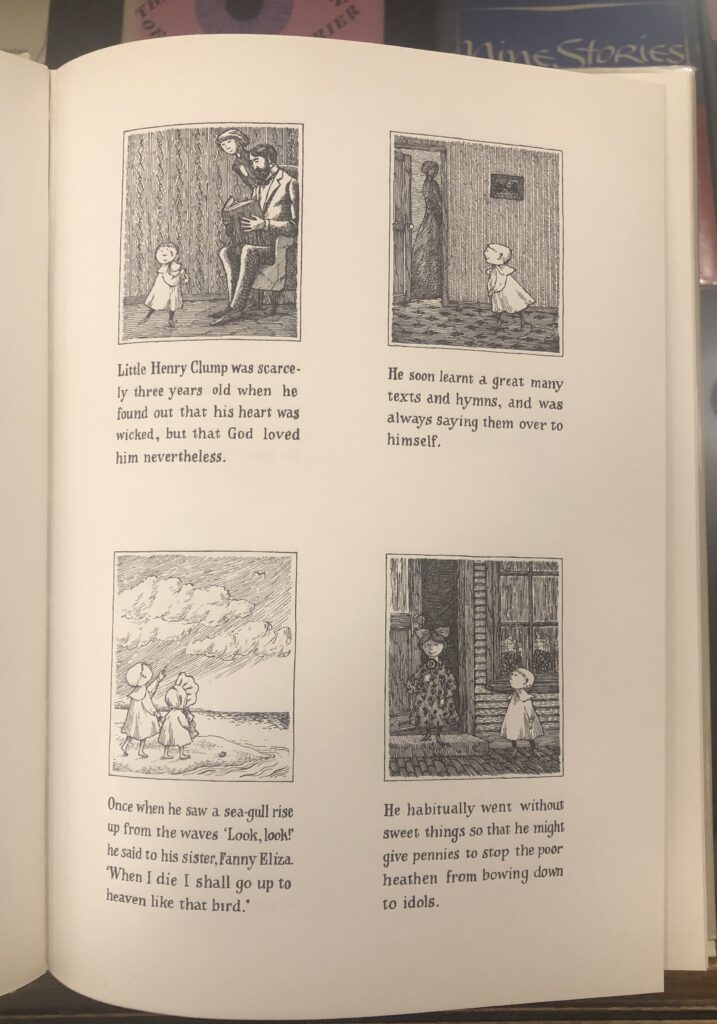
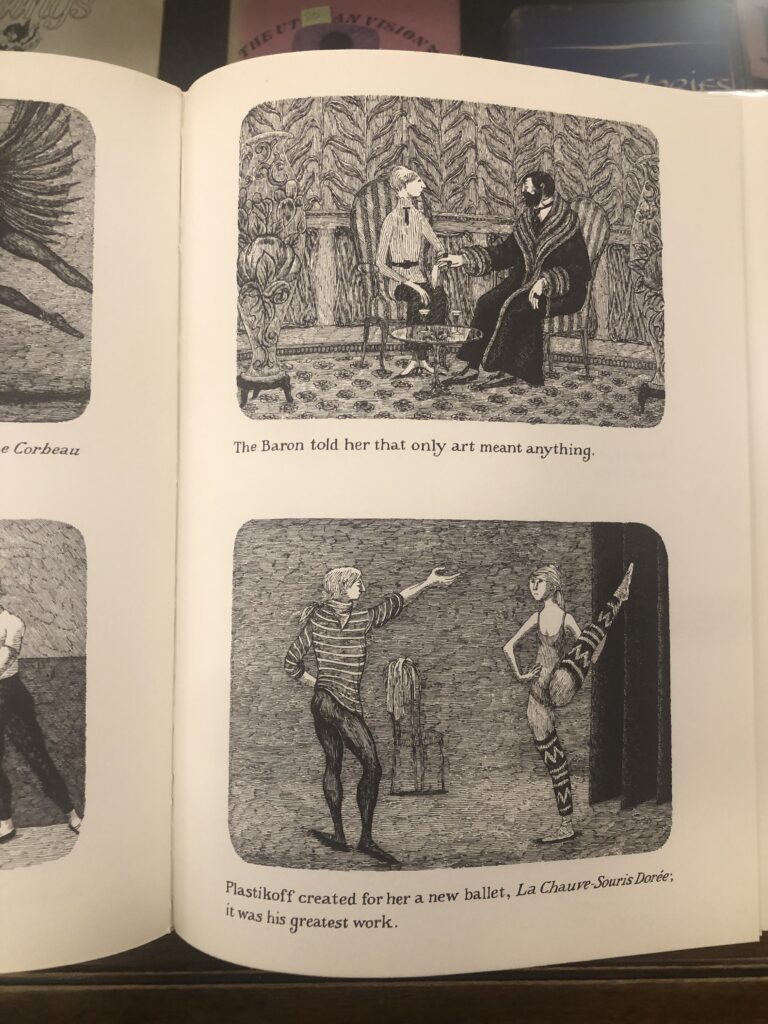
Gorey’s status as “cult classic” is a big factor in determining the value of this first edition, signed copy of Amphigorey Too – those who followed him followed him fervently, and consider his signature something to cherish. A Gorey book contains not only his one-of-a-kind words and illustrations, but also his personal flair, his refusal to define himself as a certain type of artist and person. Much as his work steered clear of categorization, Gorey himself defied binaries of sexuality and traditional notions of masculinity. His friends – including, notably, his roommate Frank O’Hara, who would go on to be a celebrated member of the New York School of poets – were mostly outwardly gay, and Gorey held himself with an exuberant, eccentric air, dressing flamboyantly in oversized fur coats, scarves, sneakers, and heavy rings. But despite copious speculation on his sexuality, Gorey never explicitly labeled himself, leaning instead towards answers such as this (printed in the September 1980 edition of Boston magazine): “What I am trying to say is that I’m a person before I’m anything else.” (If you want to read more about Gorey, O’Hara, and their participation in queer culture, we highly recommend the LitHub article “Edward Gorey, Frank O’Hara and Harvard’s Gay Underground” by Mark Dery.)
Gorey’s lasting influence shows in works influenced by his style, including Daniel Handler (Lemony Snicket’s) children’s books, A Series of Unfortunate Events, and the music video for the Nine Inch Nails song “The Perfect Drug,” which was designed to contain Goreyesque set elements and costuming. When Gorey died in 2000, he left much of his estate to a charitable trust that benefitted cats, dogs, bats, insects, and other such creatures, and he left his one-of-a-kind books to a following of readers eager to see the world through Gorey’s strange point of view. This signed first edition of Amphigorey Too is a celebration of art, counterculture, and uniqueness. If you love Gorey like we do, come by the store to take a look at this and 10+ other signed works in our collection!
